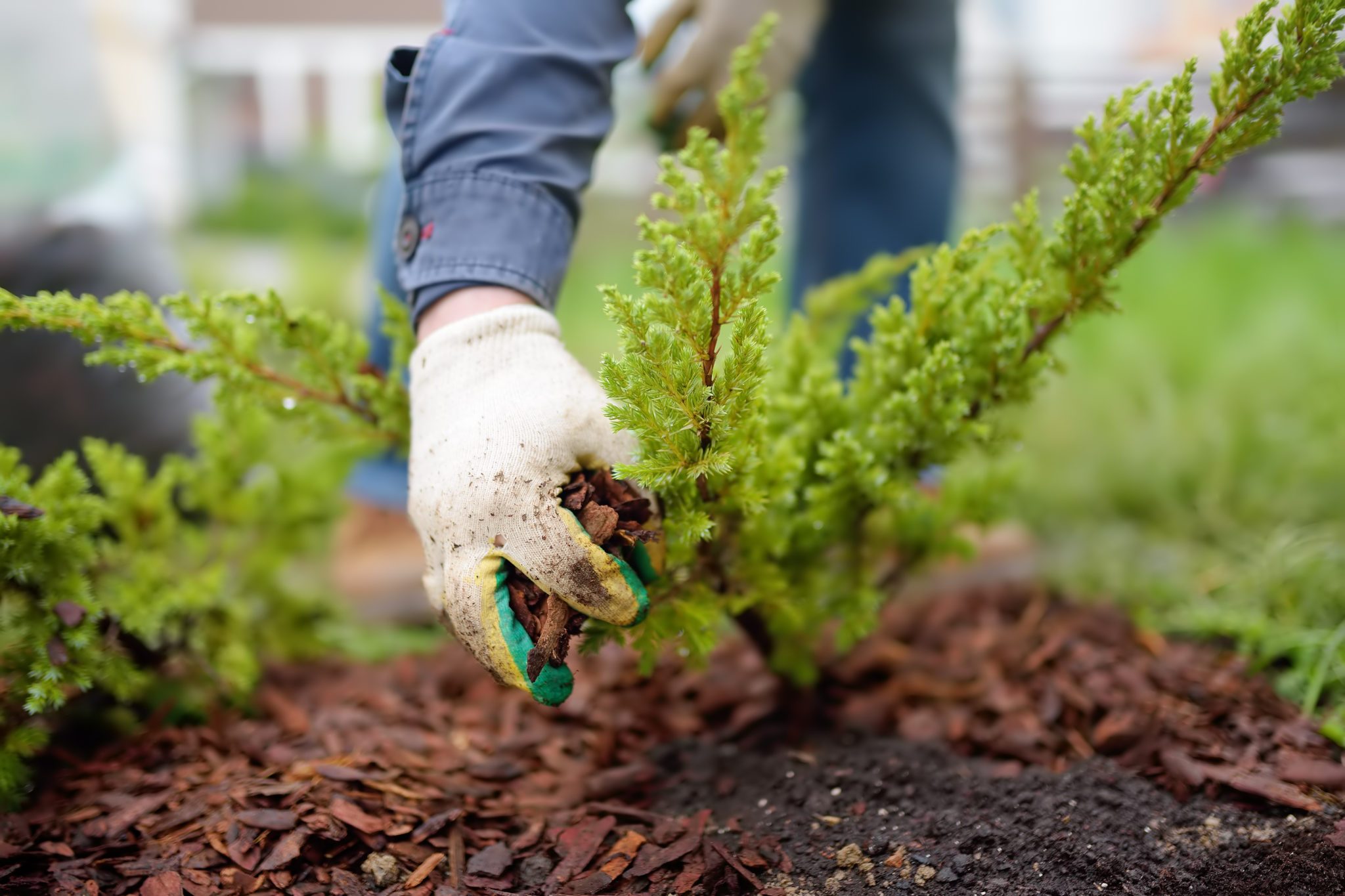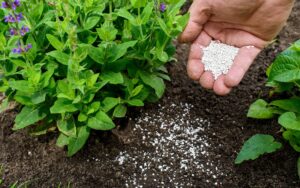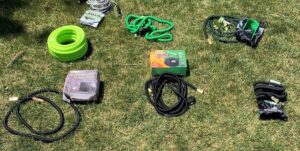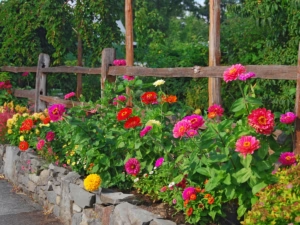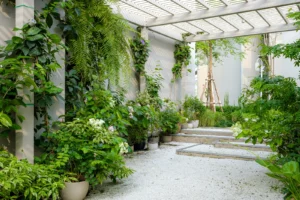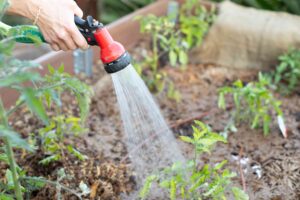Types, Expert Tips, and Best Places to Use Mulch
Mulching is one of the most beneficial practices homeowners can use to protect and beautify their landscapes. Nature’s version of mulch, found in forests as fallen leaves and needles, has been around for centuries, creating a blanket of organic matter that nourishes the soil. This guide will cover the essentials of mulch, including its types, benefits, and methods to use it effectively in your yard to create an inviting, healthy environment for plants to thrive.
What is Mulch?
Mulch is any material spread over the soil surface to enhance and protect plantings. Mulch can be organic or inorganic and may include natural substances like wood chips and grass clippings or synthetic options such as plastic or landscape fabric. This simple yet powerful addition to your garden helps conserve moisture, maintain soil temperature, prevent erosion, and reduce weed growth.

Benefits of Mulch
Mulch has many advantages beyond aesthetics, making it a crucial part of effective landscaping and plant care. Key benefits include:
- Soil Moisture Conservation: Mulch helps the soil retain moisture, reducing the need for frequent watering and helping plants withstand drought conditions.
- Weed Suppression: Mulch blocks sunlight, reducing weed seed germination, meaning less weeding work for you.
- Temperature Regulation: Mulch insulates the soil, keeping it warmer in winter and cooler in summer, promoting consistent growth conditions.
- Soil Structure Improvement: Organic mulch decomposes over time, adding nutrients to the soil, improving its structure, and encouraging beneficial microbial activity.
- Erosion Control: Mulch helps prevent soil erosion by absorbing rain impact and slowing water runoff, keeping your topsoil intact.
- Aesthetic Appeal: Mulch enhances the visual appeal of your garden by creating a neat and uniform appearance that highlights plantings and garden designs.
Types of Mulch
Mulch is broadly classified into organic and inorganic types. Each has unique characteristics that make it more or less suitable for certain applications.

Organic Mulch
Organic mulch is made from natural, biodegradable materials that decompose over time, enriching the soil with essential nutrients. Here are some popular organic mulch options:
- Wood Chips and Bark Mulch: These come from a variety of hardwood or softwood trees and are available as shredded bark or larger chunks. Shredded bark is durable and effective on slopes, while bark nuggets are slower to decompose but may wash away easily. Apply a 1-3 inch layer for the best results, but avoid piling it directly against tree trunks, as this can encourage rot and pest infestations.
- Compost: Often called “black gold,” compost is a nutrient-rich material that you can create at home. It is ideal for vegetable gardens, flower beds, and shrubs, helping to improve soil fertility and structure.
- Grass Clippings: After mowing your lawn, you can use grass clippings as a nitrogen-rich mulch layer. Allow clippings to dry before application to prevent matting, which can block water from reaching the soil.
- Leaves: Fallen leaves make an excellent free mulch that decomposes rapidly, enriching the soil. Shred them first to prevent them from blowing away and to accelerate decomposition. Leaves are especially useful in flower beds, vegetable gardens, and around trees and shrubs.
- Pine Needles: Also called pine straw, pine needles are a long-lasting mulch that decomposes slowly and adds acidity to the soil, making it ideal for acid-loving plants like azaleas, rhododendrons, and blueberries.
- Straw: Straw is an excellent choice for vegetable gardens and newly seeded lawns, as it conserves moisture and controls weeds. Be sure to use straw, not hay, as hay contains weed seeds.
- Sawdust: A great choice for acid-loving plants, sawdust decomposes slowly and can create a slightly acidic soil environment. Apply a 3-6 inch layer around plants and avoid letting it cake, as this can prevent water from penetrating the soil.
Inorganic Mulch

Inorganic mulch is often made of synthetic or mineral materials. These mulches do not decompose, making them a long-lasting choice that requires less maintenance over time. Here are some commonly used inorganic mulches:
- Plastic Mulch: Black plastic mulch provides excellent weed control and helps conserve soil moisture by reducing evaporation. It works best with irrigation systems beneath it and is commonly used in vegetable gardens.
- Landscape Fabric: This durable, water-permeable material allows air and water to reach the soil. Cover it with a thin layer of another mulch to enhance its appearance and longevity. Landscape fabric is particularly effective around trees and shrubs.
- Rock Mulch: Pebbles, crushed stone, and lava rock are all popular forms of rock mulch. They are durable, low maintenance, and add a unique look to your landscape. However, rocks absorb heat, creating a hot environment that may stress plants in warm climates.
- Rubber Mulch: Made from recycled tires, rubber mulch is a resilient, long-lasting choice. It does not decompose, making it ideal for playgrounds or high-traffic areas. However, it does not provide any soil nutrition.
How to Apply Mulch
Applying mulch properly is essential for maximizing its benefits. Follow these general guidelines to apply mulch effectively in various parts of your yard.
Around Trees
- Clear the Area: Remove grass and weeds from the base of the tree.
- Avoid “Volcano Mulching”: Do not pile mulch against the tree trunk; leave a 3-6 inch gap to prevent rot and pest issues.
- Depth and Coverage: Apply 2-4 inches of mulch in a ring extending at least 3-6 feet from the trunk. This allows for better root expansion and moisture retention.
In Garden Beds
- Layer Thickness: Spread mulch 2-3 inches deep in flower beds to suppress weeds and conserve moisture.
- Leave Plant Stems Uncovered: Keep mulch away from plant stems to prevent rot and diseases.
- Annual Refreshing: Organic mulches should be topped up annually to maintain their effectiveness and aesthetics.
Around Shrubs and Perennials
- Depth Matters: Use a 2-4 inch layer around shrubs and perennials to protect roots and stabilize soil temperature.
- Avoid Direct Contact: Leave a small gap between the mulch and plant base to prevent disease and rot.
Choosing the Right Mulch for Your Landscape
The choice of mulch depends on your specific garden needs and personal preferences. Here are some recommendations based on different landscape applications:
- Vegetable Gardens: Opt for organic mulches like compost, straw, or grass clippings. These materials enrich the soil and are safe for edible plants.
- Flower Beds: Bark, shredded leaves, or compost are ideal for flower beds, adding nutrients and visual appeal.
- Play Areas and Paths: In high-traffic areas or playgrounds, rubber mulch or wood chips provide cushion and durability.
- Perennial Borders: Pine needles or shredded bark create a natural look and are effective at weed suppression.
Mulch Maintenance Tips
Proper maintenance can extend mulch effectiveness and ensure your garden remains healthy:
- Regular Replacement: Organic mulch should be replaced annually, while inorganic mulch requires only occasional refreshing.
- Avoid Excessive Mulching: Too much mulch can smother plant roots and lead to root rot, so stick to recommended depths.
- Fertilize When Necessary: Some organic mulches, like wood chips, can temporarily reduce nitrogen levels in the soil as they decompose. Supplement with a balanced fertilizer if plants show nutrient deficiencies.
Frequently Asked Questions About Mulch
- Is mulch safe for pets?
Most organic mulches are pet-safe, but avoid cocoa bean mulch as it contains theobromine, which can be toxic to dogs. - How often should I replace mulch?
Organic mulch should be replaced or refreshed every 1-2 years, while inorganic mulch can last indefinitely with minor adjustments. - What type of mulch should I use for a vegetable garden?
Choose organic, chemical-free mulches such as compost, straw, or grass clippings to avoid contamination. - Can mulch attract pests?
Organic mulches can attract insects as they decompose, but keeping mulch layers thin and away from plant stems can help minimize pests. - Does mulch need to be removed before adding more?
If your mulch layer has decomposed to a thin layer, you can add more without removing it. However, excessive buildup should be removed to avoid compacted soil and root damage.
